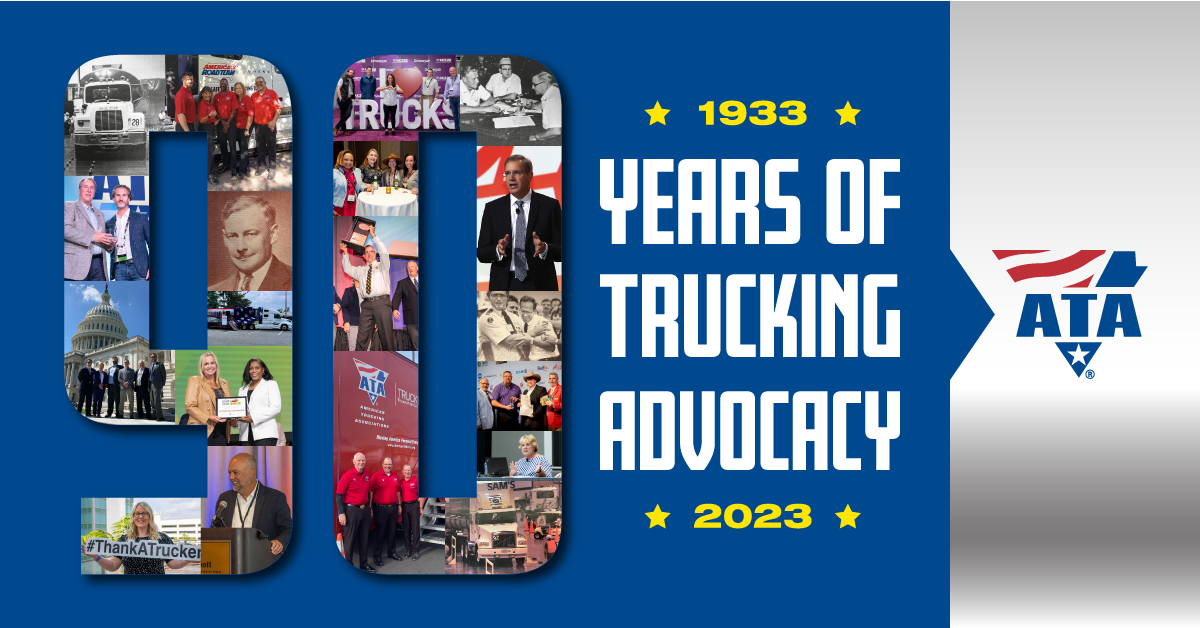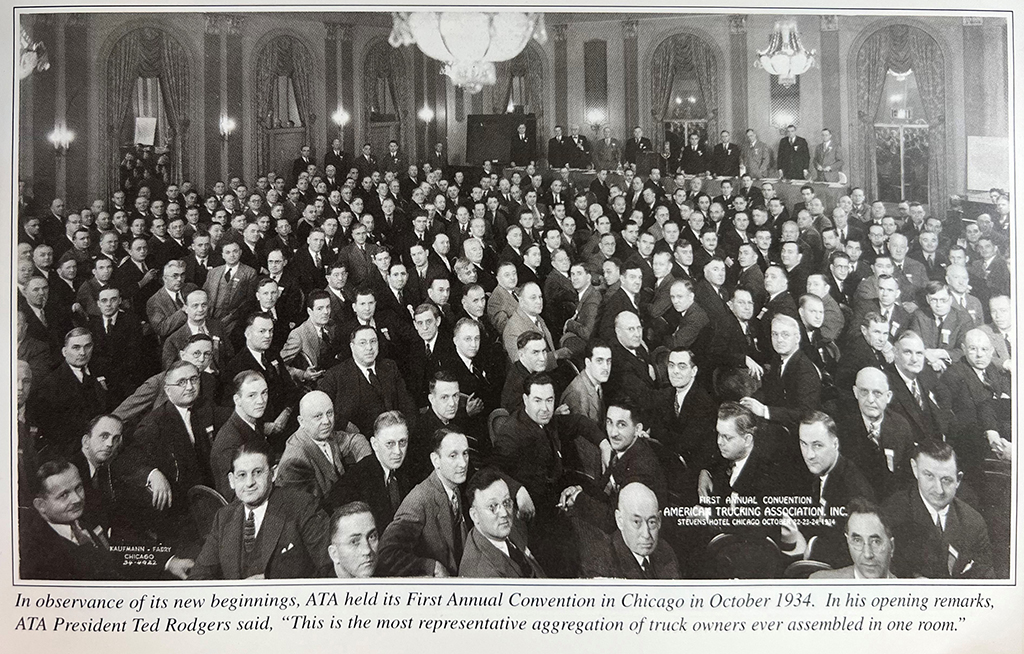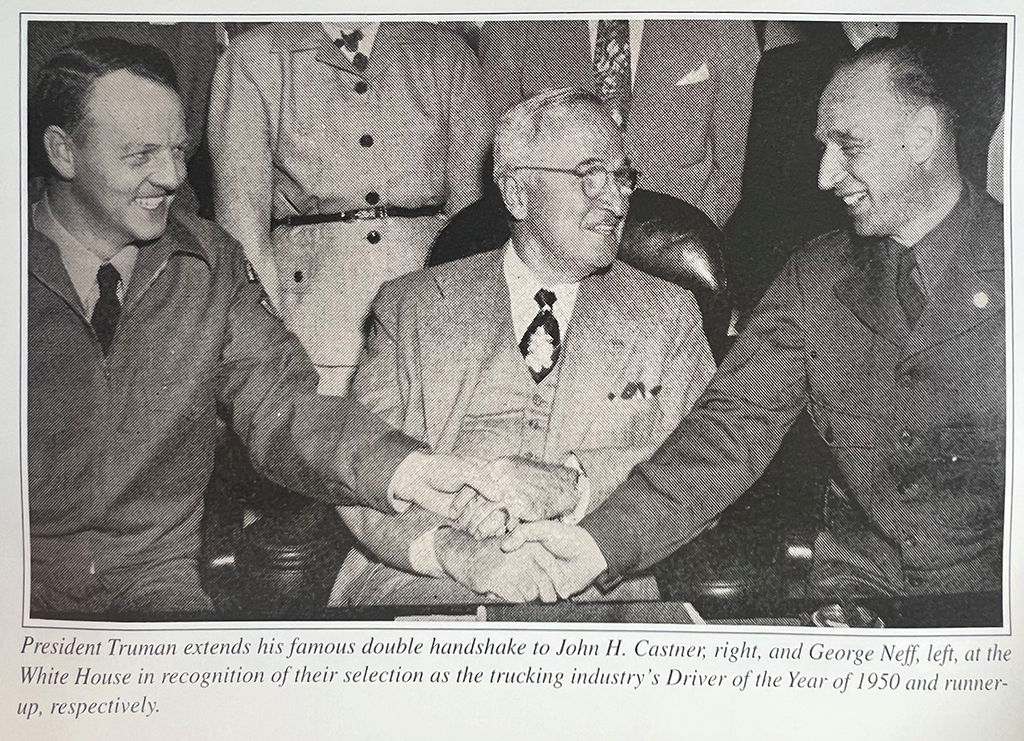
It's the opening line in the Certificate of Incorporation for the American Trucking Associations, filed in Washington, D.C. on September 23, 1933. Ninety years later, that word choice—perpetual—has borne out. ATA's founding and the nine decades of history that follow reflect the staying power of our association, industry, and country we serve.
Recounted by Bob Halladay in Partner in Progress: The Story of the American Trucking Associations, ATA's origins are rooted in a pivotal chapter of American history:
Given the choice, few people would have selected the year 1933 as an auspicious time for almost anything: marriage, birth, a new enterprise. Not so for the trucking industry. To this day, 1933 remains the benchmark for an industry that has many notable events in history.
In 1933, the nation was in turmoil; still wallowing in the deep depression that had begun in 1929 and uncertain over the future. The only glimmer of hope came from the election in November 1932 of Franklin D. Roosevelt as President. With his huge smile. booming voice, and campaign theme song of "Happy Days Are Here Again," he had defeated the capable but lackluster incumbent, Herbert Hoover.
With Congress eagerly supporting him, FDR's inauguration on March 4, 1933 set off a chain of rapid-fire events unparalleled in the history of the country. His first 100 days in office established a timetable not only for his Administration, but for every President since.
Among the early objectives accomplished by President Roosevelt was Congressional passage of the National Industrial Recovery Act and the subsequent creation of the National Recovery Administration (NRA). Under NRA, each major business and industry was required to submit and comply with a Code of Fair Competition. This involved establishing minimum wages, prescribing maximum hours of work, and setting up any other rules peculiar to the needs of each business and industry.
Defining an Industry
Composed, as it was, of truly rugged individualists and lacking little semblance of or desire for cohesion, the trucking industry -- if it could be called an industry at that point -- was confronted with the almost impossible assignment of developing its Code. Moreover, there was no single voice that could speak for the industry.
There were, however, two fledgling organizations that came the closest to being representative of the struggling industry:
- The American Highway Freight Association was a group of common carriers that had been put together primarily at the instigation of Ted V. Rodgers of Pennsylvania, with leading roles also being played by Jack Keeshin of Illinois and John Blood of Kansas.
- The second group, known as Federated Truck Associations of America, consisted of trucking organizations operating essentially at the state level. It had been established A.J. Brousseau of Pennsylvania and Frank Schmidt, an Ohio truck operator. Brousseau was President of the Mack Motor Truck Company as well as an official of the National Automobile Chamber of Commerce -- the predecessor of what is today the American Automobile Manufacturers Association.
Although both organizations lacked any real clout and the ability to truly function on a national basis, they were -- for the purpose of writing a Code of Fair Competition -- able to put together a meeting of trucking executives from throughout the country in Chicago in the spring of 1933. [....] The two organizations convened again in Washington in the summer of 1933. Out of that meeting came two big developments: (1) agreement on the fundamentals of a Code of Fair Competition and (2) a decision to fold the two groups into a genuinely national trucking organization to be known as the American Trucking Associations (ATA).
Like the industry we represent, ATA arose from necessity. Innovation powered motor carriers in the early 20th century to meet the needs of an industrialized society. As truck transportation expanded, so did its need for strong representation in the federal government, which too was growing in size and power following the Depression. Although the regulatory agency that spurred ATA's creation was short lived, the industry's need for strong and effective advocacy would endure long after.

From its inception, ATA was structured to house the breadth and depth of trucking operations across the country—a federation built on three pillars: state associations, conferences, and the headquarters operation in Washington, D.C. In 1933, there were 25 state trucking associations. Today, the ATA Federation includes affiliates in all 50 states, and five specialized motor carrier conferences:
- Agricultural and Food Transporters
- Automobile Carriers
- Intermodal Motor Carriers
- Government Freight
- Moving and Storage
From sensible safety policies to a fair and competitive tax code, to the construction and maintenance of highway infrastructure—the evolution, growth, and prosperity of America's trucking industry has depended on sound public policy that supports motor carriers' indispensable role in the economy. For 90 years, ATA has fulfilled that vital mission. Through our member-led policy committees, we'll continue to advance those policies that secure trucking's future.

Looking down the road ahead with an eye on the horizon, Bob Halladay put it best:
Those farsighted men and women who put aside differences and disagreements in 1933 to found the American Trucking Associations built well. The framework they conceived has endured. Like any good home, there have been alterations, additions, changes, and different appearances, but the foundation has remained essentially intact. This is a tribute both to the founders and to all of those who have been a part of ATA in any way over the years.
Remembering that the opening sentence of ATA's charter is, "The term for which it is organized is perpetual," this account of the years since 1933 does not conclude with...
THE END
Rather, it says...
TO BE CONTINUED
To be continued, indeed.
